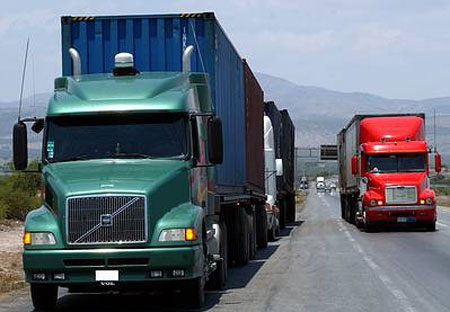In chapter 24 of Geo-Mexico, we described a typology of rural settlement locations and wrote that “rural localities near roads” (defined as those settlements within 3 km (2 mi) of a paved road) are an important category since they house 54% of all Mexico’s rural population. In fact, such settlements account for almost 90% of rural population in Quintana Roo and over 70% of the rural population in the states of Zacatecas, Yucatán, Campeche, San Luis Potosí, Nuevo León and Coahuila.
We explained that while “One of us believes that the location of paved roads is having an impact on rural settlement patterns, the other believes that rural settlement patterns are having an impact on the location of paved roads! Both viewpoints may be correct with their relative importance depending on the region in question.”
Shortly after the publication of Geo-Mexico, a loyal reader (“Jerezano“) wrote to us, agreeing with us, and sharing his personal insights into “rural localities near roads” based on his 23+ years living in the beautiful, small town of Jerez, in the state of Zacatecas. He writes,
“You are both correct, of course.”
“The rural settlement was in most cases located where it was long before the roads were paved. A municipality (municipio), when it decides to pave a road, considers many things:
- a) Where does the money come from? Local residents, associations of residents in foreign countries who send money back for improvements? and municipal and federal matching funds?
- b) Existing population figures which of course influence the traffic on the roads.
- c) Economic contribution of that rural community to the welfare of the state and municipality.”
“So, a rural community with a fairly large population, a robust economy, and an active out-of-town group of supporters, will get a paved access road long before a different community which lacks those attributes. That is easily observable in almost any location.”
“But, once that access road has been paved, the influence is also usually observable by the improved economy of that community. Easy access of products to markets, easy access of potential new residents to the city, etc. will stimulate increases in costs of real estate, living, etc.”
“Here in Zacatecas, for example, the paving of the road to Susticacán from the Jerez-Guadalajara highway stimulated a building boom which is still in progress. The construction of the new 4- lane divided highway from Zacatecas City to Concepción de Oro, and now underway from Concepción de Oro to the Coahuila border, has created an extremely active trailer stop at the Villa de Cos intersection. Before the new highway was started, that intersection was a place with potential and people who had constructed facilities such as restaurants, hotels and a gasoline station were waiting with baited breath.”
 “They are now reaping the benefits of the movement of many, many tractor-trailers from the Ramos Arizpe to San Luis Potosí highway and on to Mexico over to the new Ramos Arizpe to Zacatecas to Mexico highway. At the Villa de Cos intersection where, in the past, you would see pickups, quarter ton, 3/4 ton and a maximum of 4 to 10 ton trucks, you can now see as many as 10 to 20 semi-trailers and doble-remolques (double drop trailers) parked in front of the main restaurant and hotel. All this because the road has been steadily improved over the years from a narrow, two lane Federal highway, with a bad surface most of the distance, to the modern 4 lane divided highway easily transited by rigs which (God forbid) are really too big to be on the highways.”
“They are now reaping the benefits of the movement of many, many tractor-trailers from the Ramos Arizpe to San Luis Potosí highway and on to Mexico over to the new Ramos Arizpe to Zacatecas to Mexico highway. At the Villa de Cos intersection where, in the past, you would see pickups, quarter ton, 3/4 ton and a maximum of 4 to 10 ton trucks, you can now see as many as 10 to 20 semi-trailers and doble-remolques (double drop trailers) parked in front of the main restaurant and hotel. All this because the road has been steadily improved over the years from a narrow, two lane Federal highway, with a bad surface most of the distance, to the modern 4 lane divided highway easily transited by rigs which (God forbid) are really too big to be on the highways.”
We sincerely thank Jerezano for taking the time to share these valuable personal insights into rural roads in his “neck of the woods” in Zacatecas, and hope that the New Year brings him and all our readers Health, Happiness and Prosperity.
Sorry, the comment form is closed at this time.